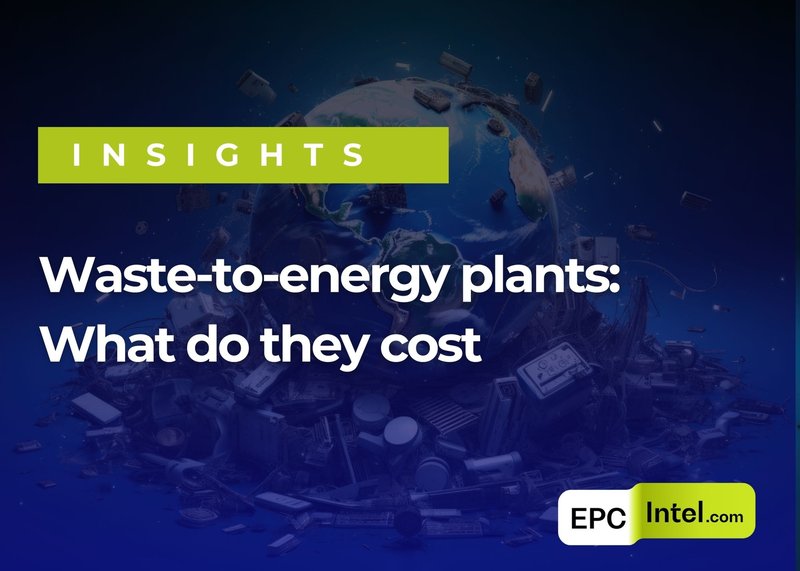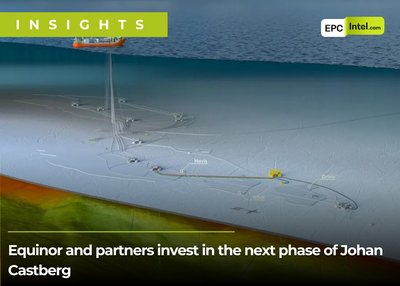The cost to design and construct a waste-to-energy (WTE) plant can vary significantly based on factors such as the size of the facility, the type of waste processed, the technology used (incineration, gasification, anaerobic digestion), and the location of the plant. However, a general estimate for the construction of a WTE plant typically ranges between USD 4 - 10 million per MW of installed capacity.
What is the breakdown of this cost?
Waste Processing and Handling Systems: USD 1 - 2.5 million per MW
This includes the equipment needed to process and handle incoming waste, such as shredders, conveyors, storage areas, and feedstock preparation systems. The cost can vary depending on the type and volume of waste being processed and the complexity of sorting and preprocessing.
Energy Conversion Technology: USD 2 - 5 million per MW
The core of the WTE plant includes the energy conversion technology used to convert waste into electricity or heat. Common technologies include:
- Incineration: Combusts waste to generate steam for electricity.
- Gasification or Pyrolysis: Breaks down waste in a low-oxygen environment to produce syngas, which is then used to generate electricity.
- Anaerobic Digestion: Converts organic waste into biogas, which is used in gas engines to produce electricity. The choice of technology impacts costs, with incineration typically being more expensive than anaerobic digestion but able to handle a wider variety of waste.
Power Generation System: USD 0.5 - 2 million per MW
This includes the turbines, generators, and other equipment needed to convert steam or gas into electricity. For instance, in an incineration-based WTE plant, the steam produced by burning waste powers a turbine generator. In an anaerobic digestion plant, biogas powers gas engines or turbines.
Emission Control Systems: USD 1 - 3 million per MW
WTE plants require extensive emissions control systems to meet environmental regulations. These systems capture and treat pollutants such as dioxins, particulate matter, and sulfur compounds before they are released into the atmosphere. The complexity and cost of these systems depend on the local regulatory environment and the type of waste being processed.
Civil Works and Construction: USD 0.5 - 1.5 million per MW
This covers the construction of buildings, foundations, access roads, and other physical infrastructure needed for the plant. Civil construction costs can vary significantly depending on the location, local labor costs, and site-specific conditions such as land preparation and permitting.
Engineering, Design, and Permitting: USD 0.5 - 1 million per MW
This includes project design, feasibility studies, environmental impact assessments, and obtaining necessary permits from regulatory authorities. The complexity of this process varies based on the jurisdiction and the size of the plant.
Key Factors Influencing Costs
Technology Used
Incineration is the most common WTE technology, but it tends to be more expensive than anaerobic digestion, which is used primarily for organic waste. Gasification and pyrolysis can be more advanced but also more costly due to the technology’s complexity.
Size of the Facility
Larger plants benefit from economies of scale, reducing the per-MW cost.
Type of Waste
Plants that process mixed municipal solid waste (MSW) require more extensive sorting and treatment systems, which can increase costs. Plants focused on specific types of waste, such as agricultural or industrial waste, may have lower costs due to simpler preprocessing needs.
Location
The cost of land, labor, and local regulations on emissions and waste management can significantly impact the overall cost of a WTE project.
Costs Based on Plant Size
Small-Scale Plant (1-5 MW)
Typically at the higher end of the cost range, about USD 7 - 10 million per MW due to lower economies of scale.
Medium-Scale Plant (5-20 MW)
Costs typically range from USD 5 - 8 million per MW.
Large-Scale Plant (20+ MW)
Larger plants often benefit from economies of scale, with costs ranging from USD 4 - 6 million per MW.
Conclusion
The cost to design and construct a waste-to-energy (WTE) plant typically ranges from USD 4 - 10 million per MW of installed capacity. This variation depends on factors such as plant size, technology (incineration, gasification, anaerobic digestion), feedstock type, location, and regulatory requirements. WTE plants are capital-intensive, but they offer significant long-term environmental and economic benefits by converting waste into electricity and reducing landfill use. Despite high upfront costs, WTE projects are essential for achieving sustainable waste management, lowering greenhouse gas emissions, and supporting the energy transition toward a circular, low-carbon economy.
To stay informed about the latest developments in waste-to-energy projects and to explore valuable information, visit EPCIntel.com, a trusted source for comprehensive data and analysis on energy infrastructure projects.




